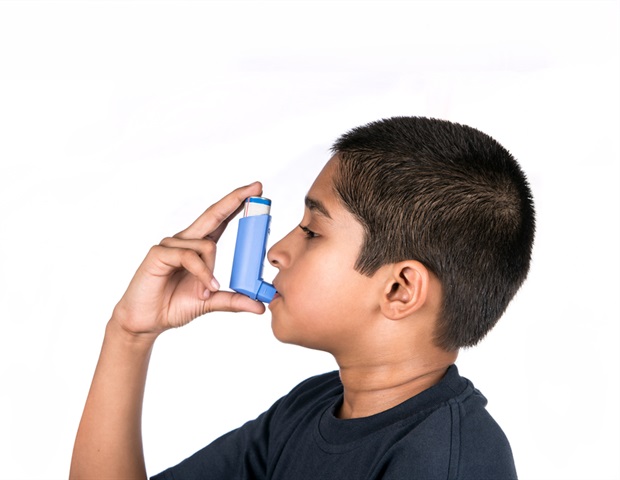If you don’t have asthma, you might think all types of asthma look and act the same. You’d be wrong. There are many different types of asthma, and each has its own triggers – and all need to be kept under control.
May is Asthma and Allergy Awareness Month – the ideal time to get the word out on the different types of asthma, as well as the different triggers and treatments. Allergists are specialists in treating asthma. We know that not all types of asthma have the same triggers, and each case warrants individual treatment. That’s why we put together individual care plans for each of our patients to make sure their symptoms are being addressed and controlled.”
Gailen Marshall, MD, PhD, allergist, president of the American College of Allergy, Asthma and Immunology
Following is a list of different types of asthma that you may or may not have been aware of, along with information on treatment options:
Adult-Onset Asthma – Many people aren’t aware that you can develop asthma as an adult – they think it’s strictly a childhood condition. Sometimes, people manage to avoid their asthma triggers for years, and when they are then exposed to the trigger as an adult, it can bring on asthma symptoms. For example, they may move in with a roommate who has a pet, or they may work around certain chemical fumes. If you think your coughing and wheezing may be signs of asthma, see an allergist for testing and recommendations on treatment.
Exercise-Induced Bronchoconstriction (EIB) – Formerly called “exercise-induced asthma,” EIB occurs if physical exertion makes it difficult for you to breathe. Symptoms develop when your airways narrow due to physical activity. As many as 90% of people with asthma also have EIB, but not everyone with EIB has asthma. EIB is caused by the loss of heat, water or both from the airways during exercise when quickly breathing in air that is drier than what is already in the body. Common EIB symptoms include shortness of breath or wheezing; tightness in the chest, decreased endurance; cough; upset stomach and sore throat.
Occupational Asthma – People with occupational asthma usually work around chemical fumes, dust or other irritants in the air. Approximately 10 to 25 percent of adults with asthma experience occupational asthma. Triggers can include chemicals used in manufacturing, paints, cleaning products, dusts from wood, grain and flour, latex gloves, certain molds, animals and insects. The prevention and treatment of occupational asthma requires environmental interventions, including education on behavioral changes to avoid asthma triggers, along with drug therapies and careful medical follow-up.
Allergic Asthma – In both children and adults, allergic asthma is triggered by allergens. 7.7% of Americans have asthma. Of these, roughly 24.9 million, 20.2 million are adults and 4.6 million are children. Not everyone who has allergies has asthma, and not everyone with asthma has allergies. But allergies such as pollen, dust and pet dander can trigger asthma symptoms and asthma attacks in certain people. By taking your family history and conducting either skin or blood tests, an allergist can work with you to identify the allergens that are triggering your asthma, and then work with you to get your asthma under control.
Non-Allergic Asthma – Not all asthma symptoms are caused by allergic triggers. Do your asthma symptoms flare up in extreme weather – either in summer’s heat or winter’s chill? Do you find yourself coughing, especially at night, during exercise or when laughing? Does stress cause you to have problems breathing? It’s possible you are suffering from non-allergic asthma – triggered by factors other than allergens. It may seem illogical that you would visit an allergist to help control non-allergic asthma, but allergists are specially trained to treat all types of asthma – even the non-allergic types.
One of the most effective medications for controlling asthma is inhaled corticosteroids, which are anti-inflammatory medications. Taken early and as directed, these safe, well-tolerated medications can improve asthma control and normalize lung function. Immunotherapy in the form of allergy shots or tablets should be considered if your asthma is triggered by exposure to unavoidable allergens, or if symptoms occur three days a week and more than two nights a month. Immunotherapy is especially helpful when symptoms occur year-round or are not easily controlled with medication.
Traditional asthma treatments may not lead to complete control of symptoms if your asthma is severe. Biologic therapies are considered the forefront of treatment because they have the potential to be personalized – to be formulated to treat specific cells and/or antibodies which lead to allergic inflammation – the inflammation that makes it so hard for some people to breathe. Biologic drugs have been shown to decrease the rate of asthma flare-ups and improve your quality of life.
If you have asthma and your symptoms aren’t controlled, see an allergist for diagnosis and treatment. Find out if you’re at risk for asthma by taking our online symptom test. To locate an allergist in your area, visit AllergyAndAsthmaRelief.org.
Source:
American College of Allergy, Asthma and Immunology
Read the full article here




